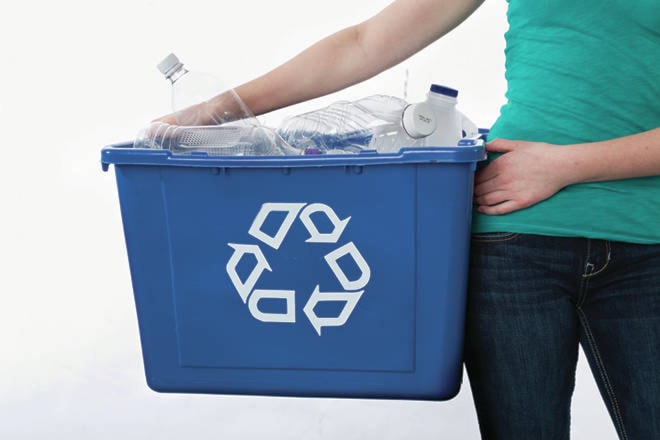The average Canadian creates more than four pounds of garbage every day, according to Statistics Canada, and although recycling programs have become the norm in most Canadian cities, recent problems with marketing recyclable materials has led some municipalities to divert at least some of that blue box material to landfills.
But that’s not happening on the West Shore and Greater Victoria, or for that matter, most of B.C.
“We have the cleanest material that I’m aware of in Canada and, as a result, our material is still welcomed in most of the markets for recyclables, including China,” said Allen Langdon, director of Recycle B.C., the non-profit organization that manages recycling in the province.
“Our contamination rate [the percentage of material in recycling bins that is not usable] is less than 6.5 per cent. Compare that with Toronto, where the contamination rate is more than 25 per cent, and you can see why our materials are still welcome. In fact, more than 96 per cent of all the mateial we recieve is recycled.”
As of Jan. 1, China has imposed tough new standards on the recycled materials they will accept from around the world. The move left some municipalities with stockpiles of materials for which there was no market; materials that may be destined for landfills as storage facilities filled to overflowing.
Calgary has already amassed more than 5,000 tonnes of material and in Halifax, it’s expected that many recyclables may soon be discarded.
“We’ve never sent our plastics overseas, so that isn’t a problem at all. And our cardboard and paper is of high enough quality so that China is still buying it,” said Langdon, adding that Recycle B.C. is always on the lookout for local markets for recyclable materials. A lot of cardboard and other fibers, he said, are used domestically for the production of egg cartons.
“We had a problem at one point with glass, but we’ve addressed that to get the glass containers separated out of the blue boxes. Now we ship that glass down to Washington State where it’s used to make new glass containers, and some of it is used locally by being ground up and used for sand blasting.”
Beyond the environmental benefits of the program, Langdon said Recycle B.C.’s approach makes economic sense as well.
The program does not rely on funding from municipal governments, instead receiving monies to fund its operation from the sale of the recyclables and from the 1,200 member retailers and producers of material who contribute approximately $80 million annually to the recycling program.
The cost of collection is also funded by Recycle B.C., who pays the Capital Regional District a set amount per household for their recyclable materials, and the CRD, in turn, uses that money to fund the pickup of materials at curbside.
“We pay the CRD to collect the material and we send it to Green By Nature, a consortium of three companies; Cascade Recovery, Emterra Environmental, and Merlin Plastics, where it is sorted and sent off to market.”
But there are always new challenges in the recycling business.
“Glass was a big issue for us as it would get broken and contaminate the other material and, because of its weight, it was a challenge to economically transport the material long distance,” Langdon said.
“We’ve now addressed that issue, but are facing some changes in packaging that has reduced the amount of steel, for example, and an increase in lightweight material and plastics for which we’re having to find new markets.”
Recent events have shown, admits Langdon, that education will be of continuing importance to everyone using the service. He explained that having residents’ co-operation in only placing the proper, clean material in the blue bins is vital if the West Shore and other parts of B.C. wish to enjoy an effective recycling service.
“I think that people on the West Shore are an example of how to do it right,” said Darren Kiedyk, the CAO of the City of Langford.
“The system we have is available to residents at no cost, and part of that is due to the fact that our residents are on board and well versed on what materials can be recycled.”
